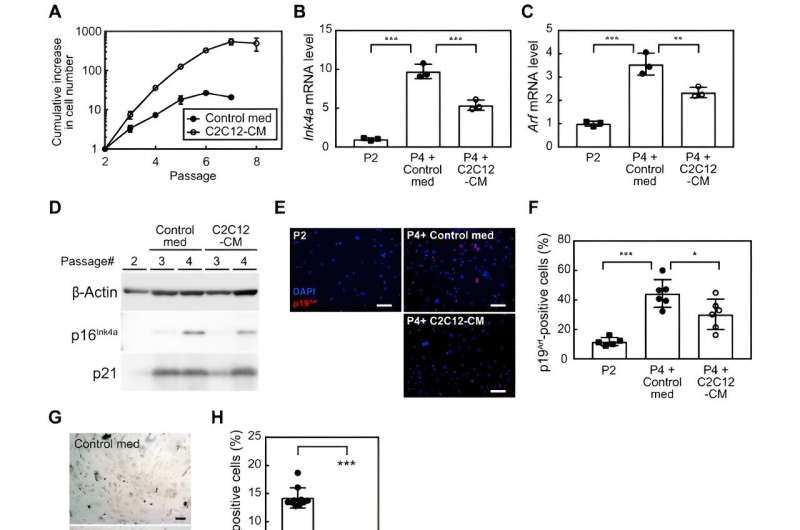This article has been reviewed according to Science X's editorial process and policies. Editors have highlighted the following attributes while ensuring the content's credibility:
fact-checked
proofread
Study: Roles of PEDF in exercise-induced suppression of senescence and its impact on lung pathology in mice

A new research paper titled "Roles of pigment epithelium-derived factor in exercise-induced suppression of senescence and its impact on lung pathology in mice" has been published in Aging.
Senescent cells contribute to tissue aging and underlie the pathology of chronic diseases. The benefits of eliminating senescent cells have been demonstrated in several disease models, and the efficacy of senolytic drugs is currently being tested in humans. Exercise training has been shown to reduce cellular senescence in several tissues; however, the mechanisms responsible remain unclear.
In this new study, researchers Hiromichi Tsushima, Hirobumi Tada, Azusa Asai, Mikako Hirose, Tohru Hosoyama, Atsushi Watanabe, Taro Murakami, and Masataka Sugimoto from Tokyo Metropolitan Institute for Geriatrics and Gerontology, Shigakkan University, and National Center for Geriatrics and Gerontology investigated myocyte-secreted factors with the potential to suppress cellular senescence, aiming to explore their protective effects against lung disease.
"We found that myocyte-derived factors significantly extended the replicative lifespan of fibroblasts, suggesting that myokines mediate the anti-senescence effects of exercise," the research team states.
A number of proteins within myocyte-derived factors were identified by mass spectrometry. Among these, pigment epithelium-derived factor (PEDF) exerted inhibitory effects on cellular senescence. Eight weeks of voluntary running increased PEDF levels in skeletal muscles and suppressed senescence markers in the lungs. The administration of PEDF reduced senescence markers in multiple tissues and attenuated the decline in respiratory function in the pulmonary emphysema mouse model. The researchers also showed that blood levels of PEDF inversely correlated with the severity of COPD in patients.
"Collectively, these results strongly suggest that PEDF contributes to the beneficial effects of exercise, potentially suppressing cellular senescence and its associated pathologies," the team concludes.
More information: Hiromichi Tsushima et al, Roles of pigment epithelium-derived factor in exercise-induced suppression of senescence and its impact on lung pathology in mice, Aging (2024). DOI: 10.18632/aging.205976





















